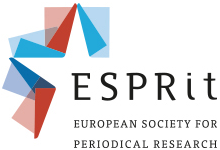Periodical Theory and Methodology
This page provides a summary of the MLA Convention on Periodical Theory/Methodology (Boston, 4 January 2013).
It has been years now since Sean Latham and Robert Scholes proclaimed ‘The Rise of Periodical Studies’ (PMLA, 2006). In that time, research in this emergent interdisciplinary field has continued to flourish, yielding a number of high-profile publically funded research projects and numerous conferences, research networks, and monographs that take the periodical as an object of enquiry in its own right.
Yet, the kind of typological and conceptual leap that Latham and Scholes identified as the next stage in the development of periodical studies remains frustratingly elusive, a product of the disciplinary fragmentation of a field where the recent surge in Anglophone Modernist studies has proceeded largely in isolation from the longer established work in Victorian Studies, not to mention the array of approaches to cultural periodicals in the national literatures of Europe and beyond.
This does not reflect a dearth of theoretical approaches in current periodical scholarship, where such theorists as Bakhtin, Foucault, Bourdieu, Latour, and Luhmann have been deployed to considerable effect. But disciplinary boundaries continue to hinder the synthesising perspective necessary to develop and disseminate further these conceptual insights.
A special workshop session at the 2013 MLA conference in Boston tackled this disciplinary fragmentation head on, bringing together periodical scholars from the US and Europe, and from Victorian and Modernist Studies in order to address the fundamental theoretical questions raised by research in this vibrant new field.
So, for example:
- How can cultural and media theory help us to conceptualise the distinctive textual and paratextual dynamics of the periodical?
- To what extent can sociological approaches to culture help us to understand the function of periodicals as sites and networks of social practice?
- How far can we synthesise the primarily internal and qualitative readings of conventional literary scholarship with the external and quantitative approaches of publishing history?
- How can we construct typological and comparative categories that capture the full range of aesthetic, material, and social features of the periodical, the diversity of different periodical forms (e.g. weekly, monthly, quarterly), and the particularities of individual historical and national contexts?
- What exactly does the name of a periodical denote and where do we draw the conceptual boundaries of our object of study? Or to borrow self-consciously from Foucault’s foundational exploration of authorship, what is a journal?
Discussants and respective papers:
- Towards a Theory of Periodical Studies, Ann Ardis, Professor of English, University of Delaware.
- Affordance and Emergence: Magazine as New Media, Sean Latham, Professor of English and Comparative Literature, University of Tulsa.
- Methods in Periodical Studies: Follow the Genre, Dallas Liddle, Associate Professor of English, Augsburg University.
- The Matter with Media, James Mussell, Lecturer in English, University of Birmingham.
- Defining the Thick Journal: Periodical Codes and Common Habitus, Matthew Philpotts, Senior Lecturer in German Studies, University of Manchester.
